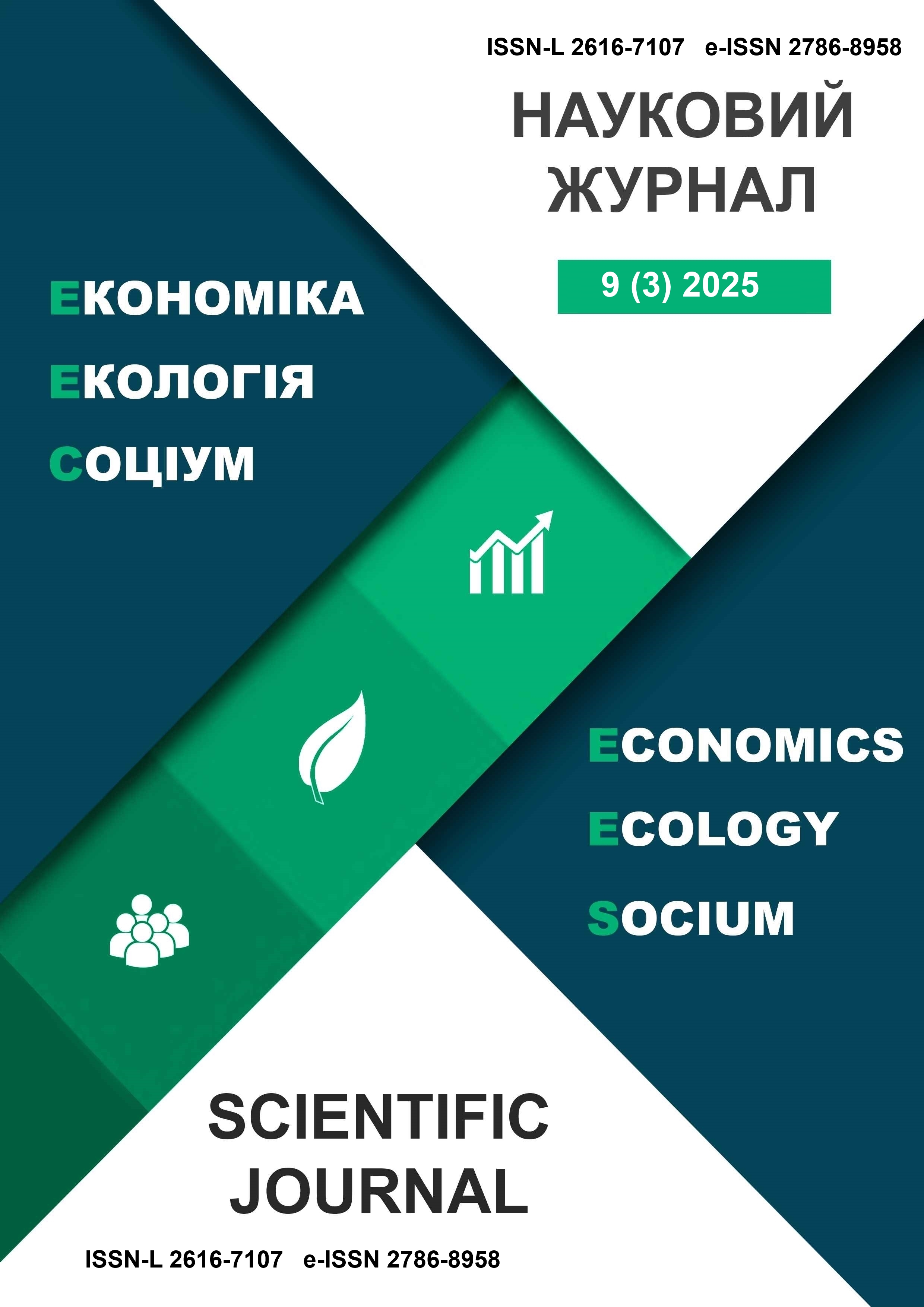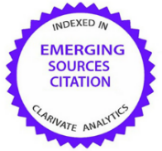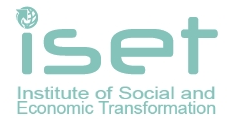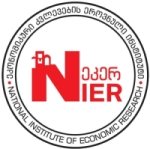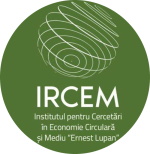Trendwatching-Driven Modelling and Management of Structural Labour Market Imbalances
Abstract
Introduction. In the context of the crisis of the Ukrainian economy, which was significantly exacerbated by labour market imbalances, institutional structures and businesses need to promptly identify asymmetries of labour market factors and relevant results of trendwatching of the market situation. Simultaneously, trendwatching is significantly complicated by uncertainty and sharp changes in the main indicators of demand and supply in the Ukrainian labour market. This necessitates the development of a new mathematical model of trendwatching that is suitable for use in the specifics of the labour market and its application in forecasting the indicators of the specified market.
Aim and tasks. This study aims to develop new mathematical tools for trendwatching, adapted to the conditions of Ukraine, and their use for assessing and forecasting labour market indicators.
Results. Forecasting the impact of the main factors on the labour market of Ukraine, contributing to the increase in wages in the IT industry, using the developed mathematical model, indicated that the impact of uncertainty is significant, from 5% to 20%. The differences in the average monthly wage by industry tend to grow, and the forecast data for 2025 will be 1.53 times greater than the indicator for 2021. This indicates that not only the magnitude (by two or more times) but also the directions of the demand-supply vectors change per quarter, even in critical infrastructure sectors. Simultaneously, a significant loss of high-quality human resources is indicated due to the outflow of highly qualified workers abroad.
Conclusions. The labour market trendwatching indicated that the difference in the rate of change in the number of resumes in the period 2023-2024 is 12.79 times greater than the rate of change in the number of vacancies, with a concomitant low level of convergence of the nonlinear trends of the specified indicators, which is evidence of a significant gap in the demand and supply of employee competencies. This is confirmed by a significant (1.5 times higher than the EU) unemployment rate among people with higher education levels. A significant slope ratio of the linear trend of the ratio of the standard deviation of the average monthly salary by industry to its average value in the economy (4.382) confirms the trend of increasing discrepancies in the personnel shortage by industry and the post-war period. Simultaneously, a trend towards an increase in job offers with increasing wages was detected, indicating a tendency in Ukraine to abandon the policy of cheap labour.
Keywords:
Trendwatching, Labour Market, Imbalance, Mathematical Model, Workforce Management.References
Bazaluk, O. (2017). The Theory of War and Peace: The Geophilosophy of Europe. Cambridge Scholars Publishing.
Bazaluk, O., Rahman, M. A., Zayed, N. M., Faisal-E-Alam, M., Nitsenko, V., & Kucher, L. (2024). Crowdsourcing review: the crowd workers’ perspective. Journal of Industrial and Business Economics, 51, 647–666. https://doi.org/10.1007/s40812-023-00295-9
Buiak, L., Hryhorkiv, M., Hryhorkiv, V., Bashutska, O., & Pryshliak, K. (2023). Computer Modeling of the Economy Dynamics of Ukraine, Taking into Account the Socio-Economic Clustering of Society. Journal of Information Technology Management, 15(4), 64-79. https://doi.org/10.22059/jitm.2023.94710
Créchet, J. (2023). Heterogeneity in labor mobility and unemployment flows across countries. European Economic Review, 155, 104441. https://doi.org/10.1016/j.euroecorev.2023.104441
Demydov, I., Sadova, U., Andrusyshyn, N., & Lutsyshyn, A. (2024). Google Cloud Services as Monitoring Tools and Prevention of Inclusion in the Rear Labor Market. In COLINS (3) (pp. 169-183). http://dx.doi.org/10.31110/COLINS/2024-3/013
Deutsche Welle. (2024). Employment of IDPs: problems and features. https://www.dw.com/uk/pracevlastuvanna-vpoproblemi-j-osoblivosti/a-68895031
European Maritime Safety Agency. (2024). EMSA Consolidated Annual Activity Report. https://www.emsa.europa.eu/publications.html
Federation of Employers of Ukraine (2024). Labor market in Ukraine: 2022 – 2023: state, trends and prospects. A study of skills needs in Ukraine during the war. https://fru.ua/images/doc/2023/ebrd_survey_20_04_23.pdf
LLC GRC. (2024). Labor Market Barometer 2024. Forecasts for 2025. GRC.ua. https://drive.google.com/file/d/195_xVW4qt5BqH5xYRQagE341vUu6LZ4X/view
Hann, R. N., Li, C., & Ogneva, M. (2021). Another look at the macroeconomic information content of aggregate earnings: Evidence from the labor market. The Accounting Review, 96(2), 365-390. https://doi.org/10.2308/TAR-2015-0564
Info Sapiens. (2025). The Ukrainian labor market during the war: retraining, business and remote work. https://www.sapiens.com.ua/ua/publication-single-page?id=358
Ippolitova, I. (2024). Salary Report: Tech & Non-Tech Summer 2024. DOU.ua. https://dou.ua/lenta/articles/salary-report-tech-nontech-summer-2024
Ivanova, N., Kuznetsova, T., & Horilyi, A. (2025). Human capital of Ukraine: challenges and opportunities. Modern Science, 1, 80-97. https://doi.org/10.62204/2336-498x-2025-1-8
Jagannathan, S., Ra, S., & Maclean, R. (2019). Dominant recent trends impacting on jobs and labor markets-An Overview. International Journal of Training Research, 17(sup1), 1-26. https://doi.org/10.1080/14480220.2019.1641292
Michaillat, P., & Saez, E. (2021). Beveridgean unemployment gap. Journal of Public Economics Plus, 2, 100009. https://doi.org/10.1016/j.pubecp.2021.100009
National Bank of Ukraine. (2024). Inflation Report. https://bank.gov.ua/ua/news/all/inflyatsiyniy-zvit-kviten-2024-roku
National Institute for Strategic Studies. (2024). Main characteristics of the labor market of Ukraine in the first half of 2024. https://niss.gov.ua/doslidzhennya/sotsialna-polityka/osnovni-kharakterystyky-rynku-pratsi-ukrayiny-u-pershomu
Pham, T., Talavera, O., & Wu, Z. (2023). Labor markets during war time: Evidence from online job advertisements. Journal of Comparative Economics, 51(4), 1316–1333. https://doi.org/10.1016/j.jce.2023.06.002
Poschke, M. (2025). Wage employment, unemployment and self-employment across countries. Journal of Monetary Economics, 149, 103684. https://doi.org/10.1016/j.jmoneco.2024.103684
Razumkov Center. (2024). Labor resources for post-war reconstruction of Ukraine: status, problems, ways to solution. https://razumkov.org.ua/images/2024/10/16/2024-Pyshchulina-TRUDJVI-RESURS-UKR-SAIT.pdf
Sanduhei, V., Bila, I., Shevchenko, O., Manzhula, I., & Iliukhina, V. (2025). Human capital as a driver of the formation of Ukraine’s competitive advantages in the post-war period. Naukovyi Visnyk Natsionalnoho Hirnychoho Universytetu, 1, 157-163. https://doi.org/10.33271/nvngu/2025-1/157
Shvets, D., Pyvovar, M., Oleksiv, I., Zhyravetskyy, T., & Marych, N. (2024). State policy in the field of employment: legal problems and prospects in the conditions of martial law. Naukovyi Visnyk Natsionalnoho Hirnychoho Universytetu, 2, 185-193. https://doi.org/10.33271/nvngu/2024-2/185
State Employment Center. (2025). Number of vacancies and number of job seekers registered with the State Employment Service. https://old.dcz.gov.ua/storinka/analityka-ta-statystyka
State Statistics Service of Ukraine. (2025). Average monthly wage by type of economic activity per quarter. https://www.ukrstat.gov.ua/
Stepura, T., Nagornyak, T., Lypchuk, V., & Sadova, U. (2022). Migration-caused qualitative changes in human potential of the states in the territorial migration labour market “Ukraine–Poland–Germany”. European Journal of Transformation Studies, 10(1), 112-137. https://czasopisma.bg.ug.edu.pl/index.php/journal-transformation/article/view/7328
WORK UA LLC. (2025). Salary statistics and job postings in Ukraine. Work.ua. https://www.work.ua/stat/count/?time=year2024&quantity=1
Zayed, N.M., Rashid, M.M., Darwish, S., Faisal-E-Alam, M., Nitsenko, V., & Islam, K.M.A. (2022). The Power of Compensation System (CS) on Employee Satisfaction (ES): The Mediating Role of Employee Motivation (EM). Economies, 10, 290. https://doi.org/10.3390/economies10110290
If the article is accepted for publication in the journal «Economics. Ecology. Socium» the author must sign an agreementon transfer of copyright. The agreement is sent to the postal (original) or e-mail address (scanned copy) of the journal editions.
